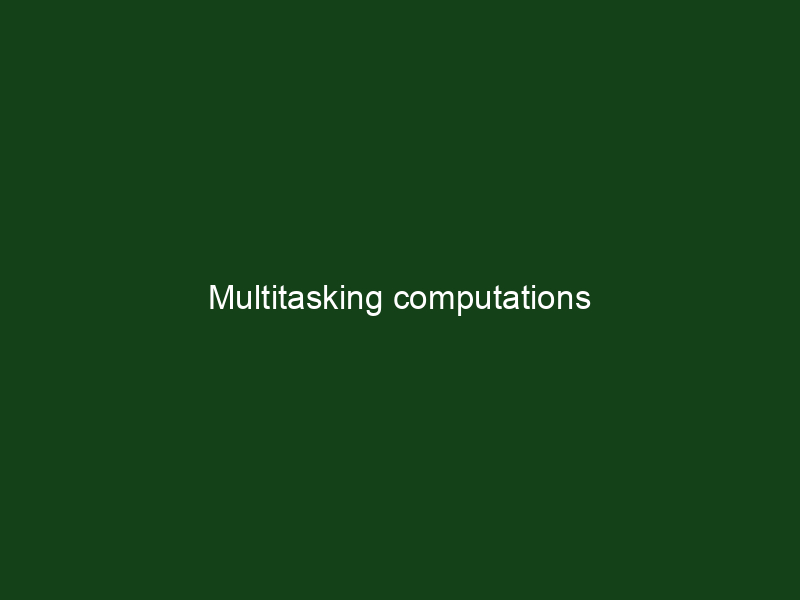It is notoriously difficult to multitask. In this exercise you calculate the sum of the numbers of the same colour e.g. red with red, green with green.
The idea is to keep in your head outputs of previous computations per colour, and update them with each new result.

Get 4 Free Sample Chapters of the Key To Study Book
Get access to advanced training, and a selection of free apps to train your reading speed and visual memory


I’m just doing 2 series with 4 numbers, and I first do one color and as soon as a get the result I move on to the other color. I use either my either voice or just read the number aloud, but I’m trying to figure out if it all should just be visualized, like seeing both colors and simultaneously performing the operation.
Thank you!
Visualize ordered in space. E.g. visualize shelves and put each series in its shelf or equivalent.
It would be nice if the colors had better contrast, red/rreen color blind individuals like myself struggle to differentiate the numbers. Maybe a color blind mode or the ability to set colors by series would help. Thank you for making this available to everyone!
Thank you.
We are moving our training applications to one mobile app.
The “multitasking computations” is not there yet, but we plan to add it by the end of the year.
The app behaves a bit more friendly than the site.
Please contact me to apply for beta testing.
Are there any methods to help visualize the calculations? I read above that sampras uses a diagram, however, this method does not work well for me.
Currently, I use Audio processing which become impossible with larger numbers and three series.
Thank you!
Chinese/Japanese kids visualize abacus and do mental math this way. They have exceptionally high mental math scores. Personally I just visualized the numbers in color – it works like face recognition with training. There are also “quick methods” and tricks for larger numbers. If you are serious about mental math, visualizing abacus or logarithmic ruler is a good way to do surprise your friends 🙂
Thanks a lot. Visualizing abacus sounds like a lot of fun. I will try that. 🙂
Hi All, I find this exercise a bit challenging. Once I increase the number of series to three, i am having a hard time remembering whether the digit is positive or negative. Thanks for your feedback
Try visualizing the minus on the number itself, like a line crossing it. The working memory of a regular superlearner is ~8. This means 3 double digits series (and 2 places for calculation). However if you divide your visualization into 2 areas (left for 2×2 temp results and right for computation) you should be able to handle 4 series. Never saw someone handle more than that.
Thank you
Dr. Lev
This is a really good exercise. I have a question for you.
I observed that at a lower complexity, I could feel in my mind the actual calculations. I could even say the numbers loud and calculate.
As I increased the complexity, I realized that I did not have time to do all that. To my eyes, the numbers became objects on the x-axis and I was moving the resultant addition left or right based on the next number. Is it the way it is supposed to work?
I really like this exercise.
Yes. Audio processing is sequential and its multitasking is limited. Visual processing is built to multitask 5 tasks and more. When you use visual processing you do not her your thoughts.
I also like this exercise a lot. Its hard to say what is the goal here, but still..how many series should we “easily” do and at what speed? How do other people usually perfom after a week (or more) of exercising?
This exercise is very good for working memory speed and accuracy [which is translated into speed and retention of reading], but one can progress without it.
Many students simply skip this exercise, so I do not have accurate statistics. Maybe 10 days of practice will lead to qualifying achievements.
By design you qualify if you can do 3 series of 7 numbers each with values between -9 and 9 within a minute.
Fixed
This is my favorite exercise so far! However, when the new number comes up but it is actually the same as the previous number, it is hard to tell that the number has changed. It would be beneficial to have some UI indicators when the numbers change.
Thank you. I need to add a correction so that does not allow the same number to appear twice. Added to my todo list.